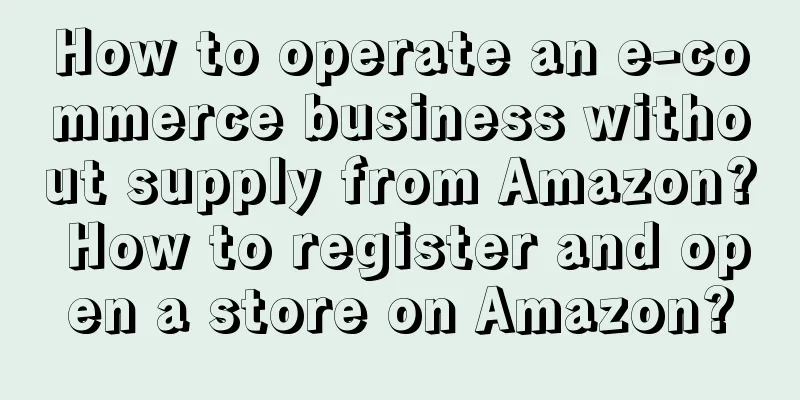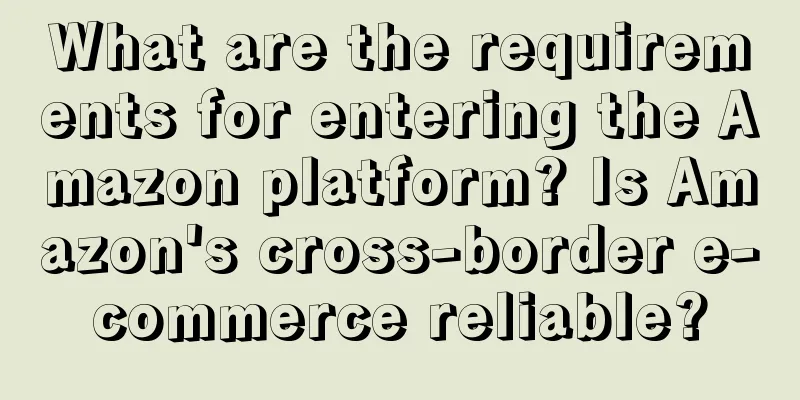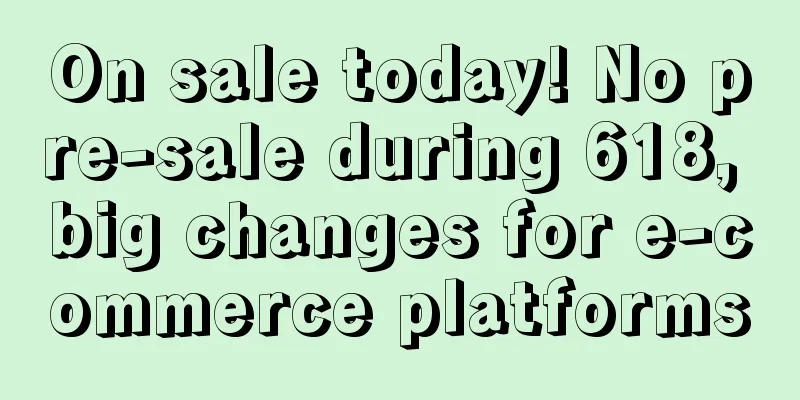How to operate an e-commerce business without supply from Amazon? How to register and open a store on Amazon?

|
As a world-renowned e-commerce platform, Amazon provides sellers with broad sales opportunities. However, some sellers may face the situation of no source of goods, that is, no actual inventory of goods. So, how to operate e-commerce without source of goods on Amazon? This article will explore the practical methods and strategies of no-source e-commerce on Amazon. 1. How to register and open a store on Amazon Before we start discussing the strategy of no-source e-commerce, let’s first understand how to register and open a store on Amazon: Choose the right seller account type: Amazon provides two main types of seller accounts, individual sellers and professional sellers. Choose the right account type based on your sales plan and needs. Register an Amazon seller account: Visit Amazon's Seller Center and follow the steps to register a seller account. Fill in the necessary information such as contact information, store name, etc. Set up shop information: After registration, set up the shop's basic information, including shop name, shop logo, business type, etc. This information will be displayed on the shop page. Add products: After registering your store, you can add products through Amazon Seller Central. If you don’t have actual sources of goods, you can consider choosing a no-source model, i.e. a dropshipping model, so that you can purchase from suppliers after receiving orders. 2. Practical methods of no-source e-commerce For sellers who don’t have actual sources of goods, there are still some ways to achieve sales on Amazon: Consignment sales model: This is a common no-source e-commerce model. After accepting an order, the seller purchases the goods from the supplier or wholesaler and sends the goods directly to the buyer. This avoids inventory pressure and risks. Private label products: If you are able to find a supplier, you can choose to customize private label products. These products will be manufactured by the supplier but can be sold under your brand. This requires some upfront negotiation and cooperation. Partnership: You can work with other sellers who have supply to sell their products on Amazon as a partner. This approach requires building trust and a partnership agreement. Digital goods: If you have certain professional knowledge or skills, you can consider selling digital goods, such as e-books, tutorials, etc. This method does not require actual inventory. Social media promotion: With the help of social media platforms, build a fan base and attract buyers through interaction and content marketing. This can help you attract potential buyers without supply. |
Recommend
After e-commerce platforms move closer to user needs, can they win back more users’ minds?
Previously, Taobao, JD.com, Kuaishou, Douyin and o...
Is it serious if the bank card for foreign trade payment is frozen for half a year? How long will it take for it to be automatically unfrozen?
One of the risks of doing foreign trade is that yo...
Shopee Official Wallet January Advertising Gold Activity Description
Shopee Official Wallet Advertising Bonus Incentive...
What are the requirements for binding a credit card to Amazon? How to unbind a credit card?
We can buy some overseas products on the Amazon pl...
The End and Way Out of Marketing Under the AIGC Wave
The content industry in 2023 will focus on AIGC. U...
What are the conditions for using Shopee store ads? The conditions vary on different sites
For Shopee merchants, promoting the store is essen...
New changes to Shopee's delivery policy for sellers
To encourage sellers to have better delivery perfo...
Is it good to have only one product in cross-border e-commerce? How to list products?
In the cross-border e-commerce industry, choosing ...
How to buy things on Amazon Japan? What is the shopping method?
There are many sites on the Amazon platform, such ...
WeChat official version suddenly updated! This New Year limited function is really fun
The official version of WeChat has recently introd...
The second half of Xiaohongshu’s bonus has begun!
Now more and more people are starting to use Xiaoh...
What is the interview process for Shopee Singapore? Will there be a rejection letter during the Shopee interview?
As the headquarters of Shopee, Singapore's int...
The end of B&B is self-media?
During the past May Day holiday, the popular touri...
To analyze indicator fluctuations, the data model should be built like this
How to analyze indicator fluctuations? The author ...
How to combine private domain business with ChatGPT
ChatGPT has not been launched for a long time, but...









